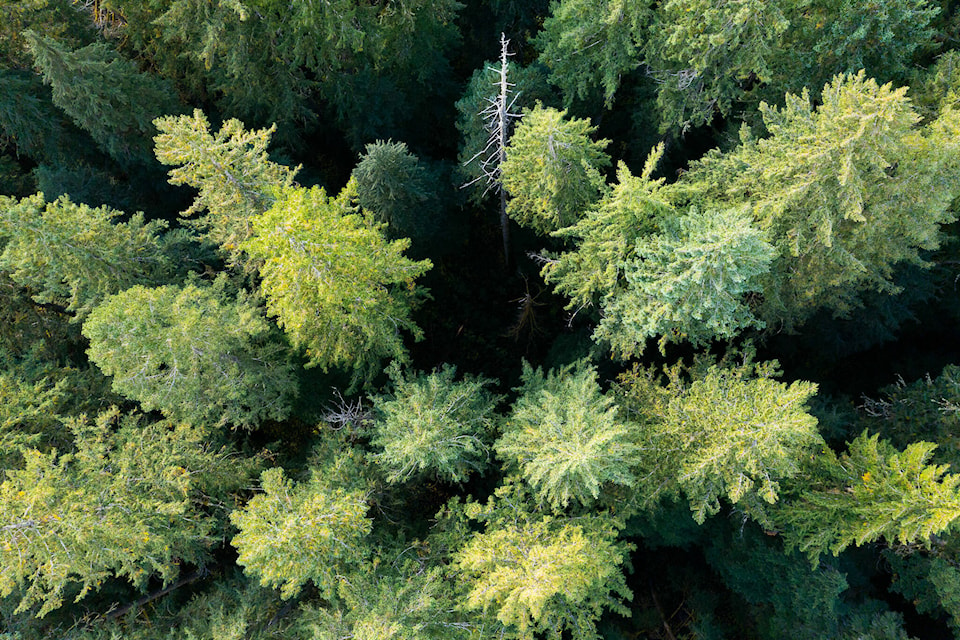Over 650 square kilometres of forest, rivers, old growth and shoreline are in the process of being protected by the Mowachaht / Muchalaht First Nation on western Vancouver Island.
The Mowachaht / Muchalaht First Nation — located in the Tahsis, Nootka Island, and Gold River region — is working to protect the area of their unceded territory with the goal of protecting old growth forests and salmon habitats. The locations include 311 square kilometres of old growth forests.
“We’re trying to protect the most important salmon habitat that’s left in the watersheds in the Nation,” said Eric Angel, project manager for the Salmon Parks project. “We figured out sometime ago that if we looked after about 20 per cent of the core salmon watersheds, we we backstop 90 per cent of the salmon productivity that is dependent on the land and the freshwater ecosystem.”
When they’re established, the parks will both be on land and will extend into the ocean to protect the salmon habitat there. Angel said that the old growth forest in the area is “central to the salmon’s habitat and family life cycle.
“We’re going to move out into the into the marine environment and protect estuaries and the important migration routes that salmon have to take into the open ocean. The idea is to really be doing what we can to look after our salmon throughout their life cycle … we want to eventually restore those populations to the kind of abundance that we saw say 50 or 100 years ago.”
Though they are not the first First Nation to undertake this kind of work, the idea is new enough that Angel says they’re still trying to figure out how it will all work. They are in talks with the province about establishing legal protections for the area, and will be protecting it under Nuu-chah-nulth law as well.
“Ideally … there is going to be a joint designation where the province and First Nation will come together,” Angel said. “Then we together we create a management plan for the area and then we start bringing in all the other folks who’ve gotten interests will be talking to the forestry industry into the recreational fishing industry into tourism operators and the local communities Gold River and Campbell River and Tahsis … just making sure that everyone’s on board and there’s a common commitment and understanding of how we go about doing this.”
Something else that’s needed when establishing a new park is funding. Putting land into conservation necessarily means an immediate loss of economic opportunity, however groups like the Nature-Based Solutions Foundation exist to fill “critical gaps that are essential for creating new protected areas.”
“We we set up this new organization to directly work with land-embedded communities — most significantly First Nations — but also at some point ranchers on the Prairies Trappers and Métis communities and Southern Boreal woodlot owners,” said Ken Wu from Nature-Based Solutions. “These land-embedded communities are vitally important in to establish protected areas on Crown lands and unceded First Nations lands.
“A barrier for a lot of First Nations is that if they’re gonna forego all the resource opportunities in those territories … then there needs to be support for building sustainable alternatives,” he said.
Part of that funding solution also comes from government.
“There’s been some huge announcements this fall from the feds and the province,” said Angel, referring to “The Tripartite management agreement with Canada, B.C. and their first Nations Leadership Council.
“There’s an old growth nature fund that the feds are putting up the money for but the province is gonna be dispersing that, there’s a conservation financing mechanism the province announced month and a half ago that’s going to help, conservation initiatives, access to kind of long-term sustainable financing.”
One of those initiatives was for projects that help sequester carbon emissions. The Salmon Parks received $15 million from the federal government to do that.
“It’s it’s an amazing area for carbon storage because I’ll go for us sequester more carbon than almost anywhere on planet Earth,” Angel said, adding that getting the funding “was life-changing. I was just in the community last night and presenting to about 60 people and there’s so many young people out there who are so excited about it … it’s for those kids that are gonna be growing up with this. It’s really exciting for them.”
Despite the immediate economic setback of not being able to harvest trees, both Wu and Angel say there is a much greater economic long-term benefit available.
Angel says that there are job opportunities for community members as well.
“We’re setting up a Guardians program,” he said. “Creating employment within the community and giving people opportunities to be participating in this is going to be really important because it’s super critical that this is a holistic vision … it represents not just looking after nature well, but it also means restoring lives for people.
